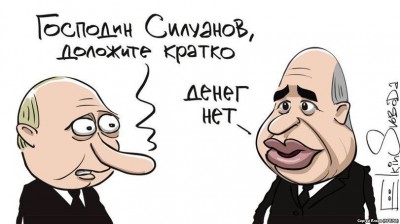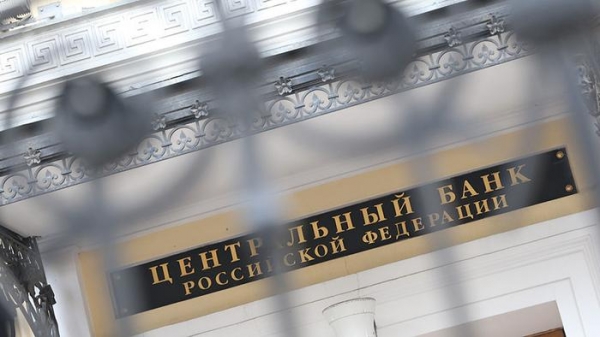
In 2016, Russia’s Central Bank can print about 7 trillion rubles, which is a huge sum, because the sum of all cash and non-cash rubles in Russia on January 1, 2016, was less than 36 trillion.
The Bank of Russia in April issued (ie, simply “printed” in cash or non-cash) for the Ministry of Finance 390 billion rubles to cover the budget deficit. Formally, the Ministry of Finance, the Central Bank sold foreign currency for this amount from the Reserve Fund, but in fact, the currency only moved from the account of the Ministry of Finance to the account of the Central Bank, remain part of the international reserves of the Russian Federation. And the Central Bank financed the operation by issuing new money.
This scheme is applied by the Kremlin since the beginning of 2015. At the end of last year, the Bank of Russia published a budget so 2.2 trillion rubles.
In 2016 year, according to the budget law, the Central Bank needs to issue to cover the budget deficit of at least 2.6 trillion rubles.
However, the lack of funds in the Treasury may exceed 4 trillion rubles, said Finance Minister of Russia Anton Siluanov. The main reason is the collapse of oil revenues and Western sanctions. In February every fourth rouble provided by the state budget expenditure was not provided with money, and in March — every third.
I agree with Siluanov his predecessor, former Finance Minister Alexei Kudrin, who is considered a recognized expert in this field. “If the oil price will remain at the current level 41-43 of the dollar, maybe it will even rise to 50 $ … even with this… our budget system should have a deficit of about 4.5-5.0 per cent of GDP,” he said. Under certain conditions, according to him, the deficit this year could rise to 5.5%.
Given that the size of GDP in 2016 is expected to reach 78,67 trillion rubles, Kudrin also believes that the budget deficit could exceed 4 trillion rubles. So the printing presses of the Central Bank have a lot of work.
In addition, in early March, Prime Minister Dmitry Medvedev gave the course on the program of the Stolypin club “Economics of growth”, which, in particular, also provides for an unsecured the money issue. It is expected that these funds the Bank will issue affordable loans to commercial banks, those in turn provide cheap loans to business, which thus aktiviziruyutsya and start the growth of the Russian economy.
Now comes the formation of the interagency working group, which will be tasked to agree on the objectives and key performance indicators and to approve the enlarged list of activities for each of the blocks of the program.
For purposes of this program, according to its authors, it is expected to print at 1.5 trillion rubles a year for five years.
In addition, Finance Minister Siluanov said that “…the Central Bank started to conduct large volumes of financial and banks bought significant amounts of monetary gold, also issuing rubles”.
The Bank of Russia really bought in 2015, about 203,5 tons of gold, and exclusively of Russian origin, which is much higher than in previous years.
This year, the Central Bank apparently does not intend to reduce the speed. In the first quarter they were purchased about 47 tons of gold. In February, the Bank of Russia even became the absolute champion on volume of purchases of gold among the world’s Central banks.
Given that the Central Bank buys gold produced in Russia, he pays in rubles. Average ruble gold price, set by the Central Bank, in 2015 amounted to about 2 thousand 280 rubles per gram.
Thus, in 2015 the Central Bank has spent on the purchase of gold about 500 billion rubles. This year, apparently, will spend about the same, if not more, given the plans of the Central Bank to increase its gold reserves from the current 390 billion to $ 500 billion within a few years. Apparently, it’s hard to collect currency and buy gold on the domestic market for “free” novonadezhdyne rubles is much simpler.
As for financial rehabilitation of troubled banks, in August 2015, the Central Bank ceased to publish information about the costs, but according to media reports, since then, on these purposes it has been spent about 700 billion rubles (according to the April 2016), with an average of 100 billion per month.
In the end, with an anticipated budget deficit of about 4 trillion rubles, proposed spending on economic development programme of 1.5 trillion rubles, expenses on gold in 0.5 trillion roubles and expenses on the reorganization of more than 1 billion rubles, the Bank of Russia, apparently, will publish in 2016 for this purpose about 7 trillion rubles.
Thus, given that at the beginning of the year, the total volume of the ruble money supply in the country was less than 36 trillion roubles, this year this mass may grow another 20%.








